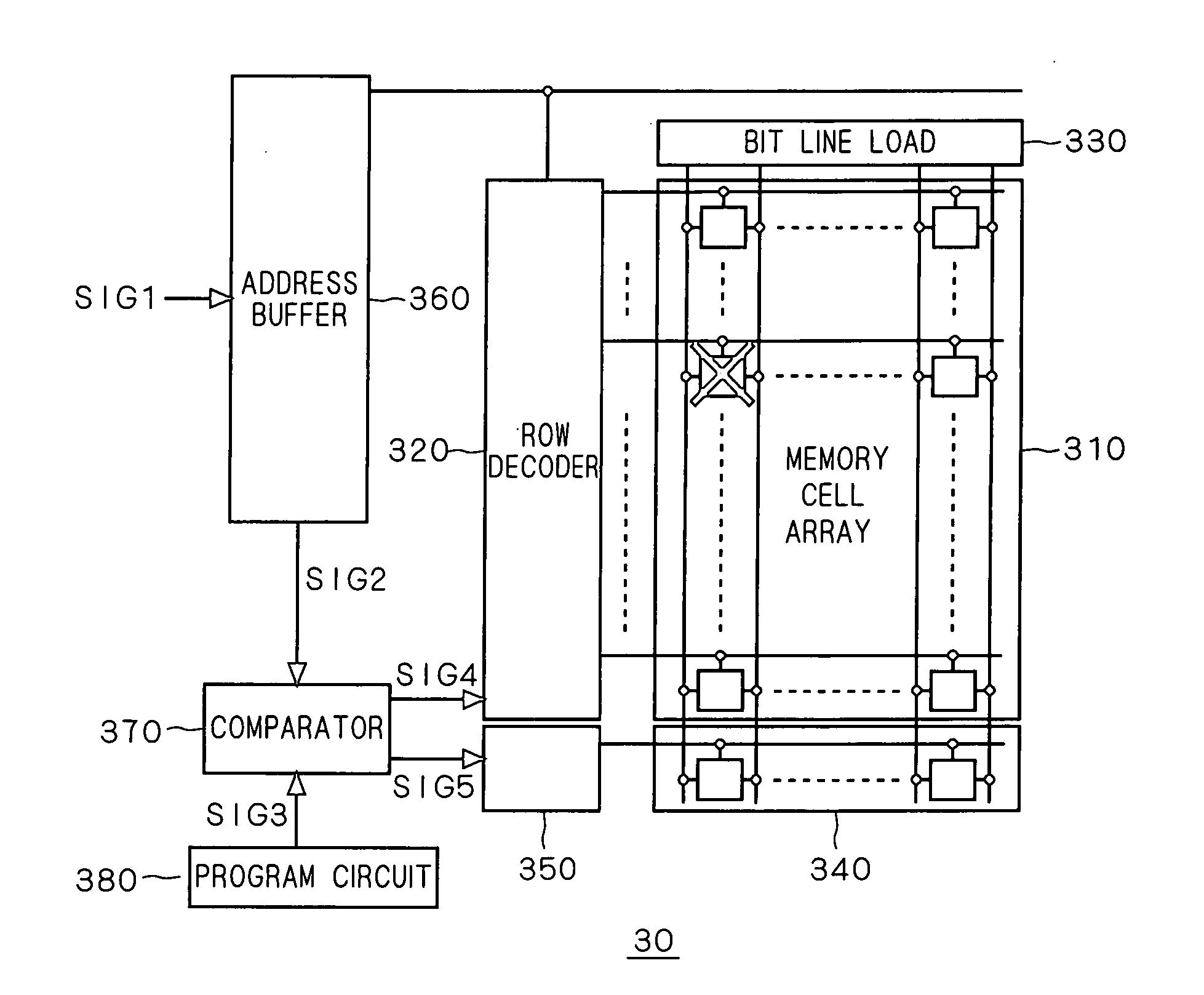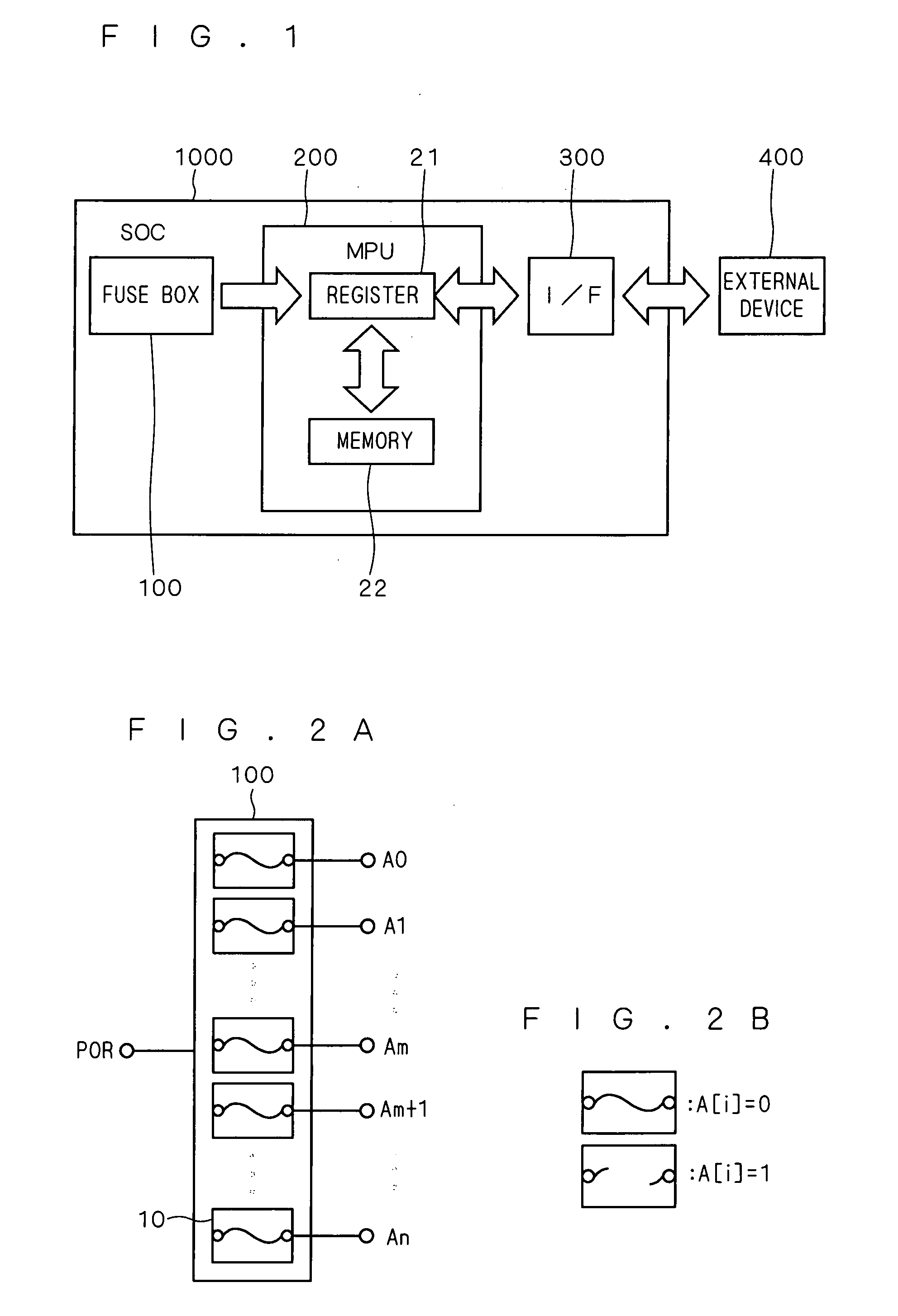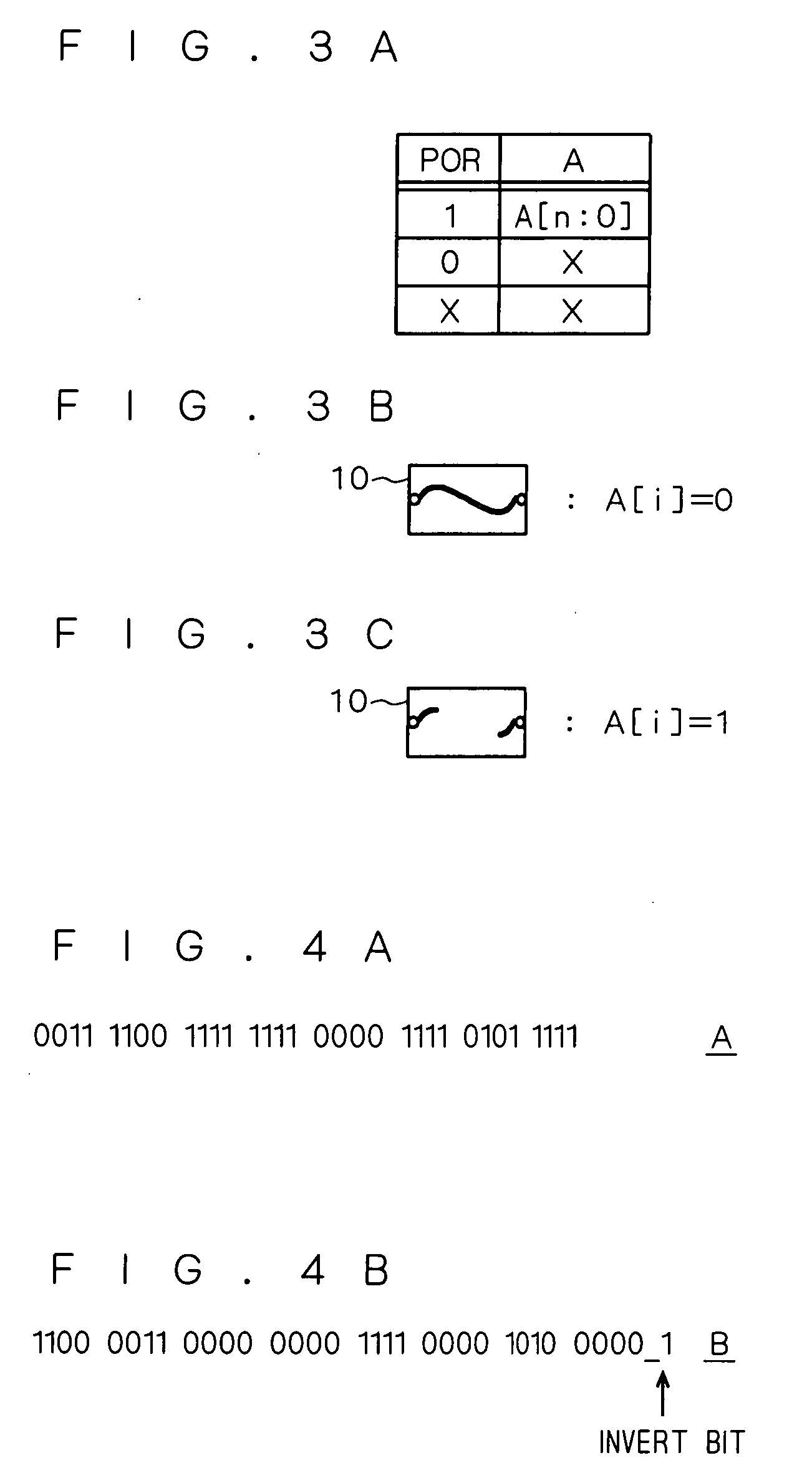Semiconductor device, unique ID of semiconductor device and method for verifying unique ID
a semiconductor device and unique id technology, applied in the field of semiconductor devices, can solve the problems of plurality of same unique ids accidentally, long manufacturing time of semiconductor devices such as socs, and difficulty in recording them in memory mounted on normal cmos, etc., to achieve excellent uniqueness, easy verification, and shorten manufacturing time
- Summary
- Abstract
- Description
- Claims
- Application Information
AI Technical Summary
Benefits of technology
Problems solved by technology
Method used
Image
Examples
embodiment 1
[0048]FIG. 1 is a block diagram showing the constitution of a SOC (System on Chip) 1000 according to an embodiment 1.
[0049]As shown in FIG. 1, the SOC 1000 comprises a fuse box 100, a MPU (Micro Processing Unit) 200 (processing unit) and an I / F (interface) unit 30. The fuse box 100 has a plurality of fuses (not shown in FIG. 1) for recording a unique ID, and each fuse corresponds to each bit of the unique ID. The MPU 200 has a register 21 and a memory 22.
[0050]Referring to FIG. 1, the unique ID recorded in the fuse box 100 is read by the register 21 of the MPU 200 and transferred to an external device 400 through the I / F unit 300. Alternatively, it may be such that the unique ID read by the register 21 is transferred from the register 21 to the memory 22 and stored and processed there and read by the register 21 again and transferred to the external device 200 through the I / F unit 300.
[0051]FIG. 2A is a view schematically showing the fuse box 100 in which the unique ID is recorded o...
embodiment 2
[0083]The description has been made of the case where one invert bit is set for the entire data comprising one bit string in the embodiment 1. However, data used actually include a part in which the ratio of the bit of “1” is extremely small in some cases and in this case, the LT number can be further reduced by removing such part from the object of the invert bit. That is, one invert bit may be set to only a part of the data comprising one bit string.
[0084]FIG. 8 is a flowchart showing steps (unique ID recording steps) of a manufacturing method of a semiconductor device according to an embodiment 2. Referring to FIG. 8, a bit [n] is provided as an invert bit for a bit string [n−1:0] of data having a n-bit length. This bit string [n−1:0] is divided into a bit string [m−1:0] having m-bit length and a bit string [n−1:m] having a (n-m)-bit length (m is a natural number not more than (n−1)), and the invert bit [n] is set only for the bit string [n−1:m]. That is to say, according to the ...
embodiment 3
[0090]The description has been made of the case where one invert bit is set for the data comprising one bit string in the embodiment 2. However, the present invention is not limited to this. For example, two or more invert bits may be set for data comprising one bit string.
[0091]FIG. 9 is a flowchart showing steps (unique ID recording steps) of a manufacturing method of a semiconductor device according to the embodiment 3. Referring to FIG. 9, invert bits [n−1] and [n] are set for a bit string [n−2:0] of data having a (n−1)-bit length. It is assumed that the bit string [n'2:0] is divided into a bit string [k—1:0] having a k-bit length, a bit string [m−1:k] having a (m−k)-bit length, and a bit string [n−2:m] having a (n−m−1)-bit length (k is a natural number not more than (m−1)), and the invert bit [n−1] is set only for the bit string [m−1:k] and the invert bit [n] is set only for the bit string [n−2: m]. That is to say, according to the flowchart in FIG. 9, steps S1 to S4 in the flo...
PUM
 Login to View More
Login to View More Abstract
Description
Claims
Application Information
 Login to View More
Login to View More - R&D
- Intellectual Property
- Life Sciences
- Materials
- Tech Scout
- Unparalleled Data Quality
- Higher Quality Content
- 60% Fewer Hallucinations
Browse by: Latest US Patents, China's latest patents, Technical Efficacy Thesaurus, Application Domain, Technology Topic, Popular Technical Reports.
© 2025 PatSnap. All rights reserved.Legal|Privacy policy|Modern Slavery Act Transparency Statement|Sitemap|About US| Contact US: help@patsnap.com



